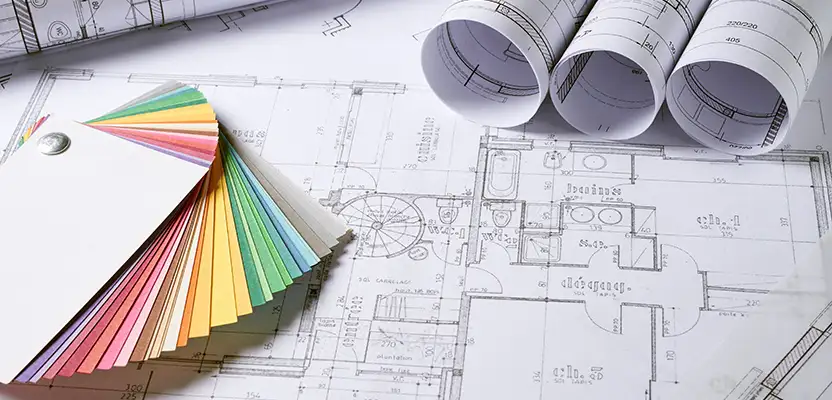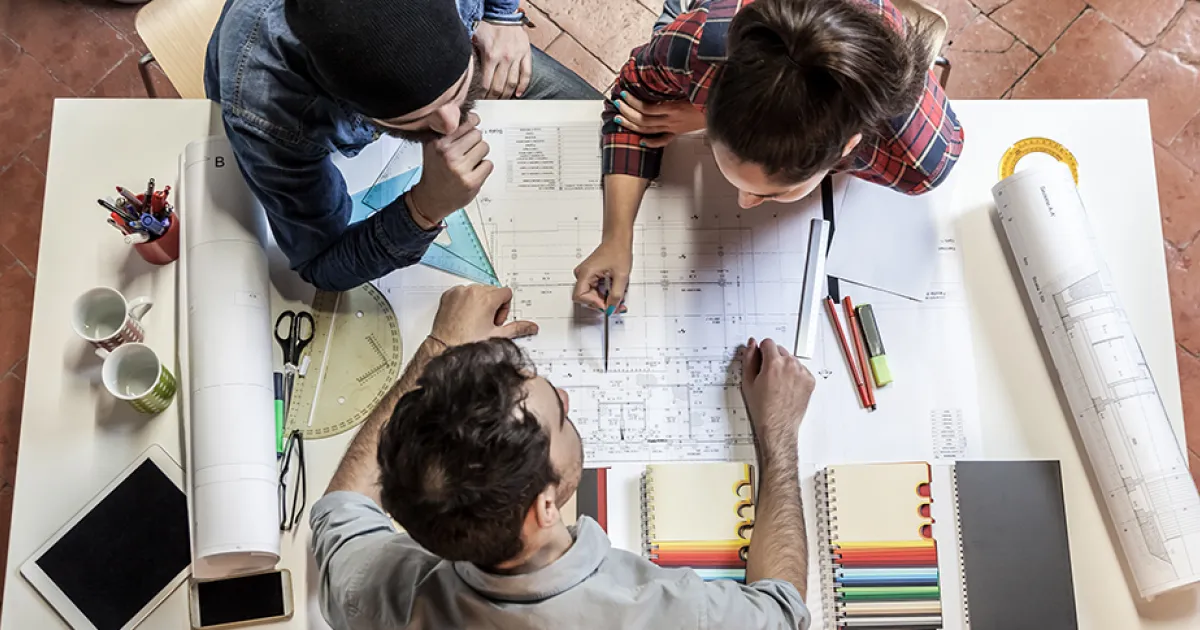Architect Collaboration Tips for Working with Contractors and Builders
Wiki Article
Comprehending the Diverse Occupation Paths Available for Aspiring Architect
As an aspiring Architect, you have a world of occupation paths awaiting you. Each path offers one-of-a-kind difficulties and opportunities to use your creative thinking and technical expertise. Whether you're drawn to traditional design or the nuances of lasting style, there's a specific niche that straightens with your passions. Understanding these varied choices can form your expert trip, but which instructions will you choose to explore initially?Traditional Design: Designing Frameworks and buildings
Standard style concentrates on creating structures and structures that blend performance with visual allure. As you explore this field, you'll appreciate the complex equilibrium in between form and function. You'll learn to draw motivation from historic designs, including elements like balance, materials, and workmanship. Your designs can reflect social heritage, showcasing regional customs while meeting modern demands.You'll create abilities in composing, model-making, and website evaluation, permitting you to picture and interact your concepts efficiently. Engaging with clients, you'll need to comprehend their vision and convert it right into practical layouts.
In addition, constructing codes and sustainability techniques are essential in your work, guaranteeing your frameworks are risk-free and ecologically friendly. As you expand in your occupation, you'll discover opportunities in domestic, industrial, or perhaps remediation jobs, each offering distinct difficulties. Accepting conventional design leads the means for a meeting job that pays homage to the past while forming the future.
Urban Planning: Shaping Neighborhoods and Public Spaces
As a hopeful Architect, you can play a crucial duty as an urban planner, transforming just how communities communicate and function. By utilizing area interaction techniques, you'll assure that locals have a voice in shaping their environment. Plus, incorporating sustainable design concepts will help produce rooms that not only fulfill today's requirements yet likewise shield the future.Function of Urban Planners
While several could think of architects as the sole enthusiasts behind buildings, metropolitan coordinators play an essential role in shaping the broader landscape of neighborhoods and public areas. By working together with different stakeholders, you'll assist create parks, transport systems, and household locations that advertise social interaction and availability. Your proficiency in spatial layout and area characteristics allows you to envision future growth while preserving cultural heritage.Community Engagement Methods
Efficient area interaction strategies are important for urban organizers to assure that the voices of residents are heard and valued in the planning procedure. To cultivate meaningful dialogue, you must focus on open discussion forums and workshops where community members can reveal their concepts and concerns. By actively listening and including responses, you'll create rooms that mirror the community's demands, inevitably leading to even more successful and sustainable city atmospheres.Lasting Layout Concepts
When creating city areas, including lasting layout concepts is crucial for producing atmospheres that prosper both environmentally and socially. Think about incorporating environment-friendly areas, like parks and yards, to enhance biodiversity and boost air high quality.Creating with water conservation in mind is likewise crucial-- consider rainfall yards and permeable surface areas to handle stormwater. Entailing area participants during the planning process guarantees that the areas you create fulfill their demands and urge social interaction. By accepting these concepts, you'll add to vivid, lasting city landscapes that benefit every person.

Landscape Design: Producing Sustainable Outside Environments
As you discover landscape design, you'll find necessary design principles that develop functional and stunning outdoor areas. Sustainable techniques play a vital role in making certain these environments flourish while lessening environmental impact. Plus, you'll locate a variety of occupation opportunities that permit you to make a genuine distinction in how individuals communicate with nature.Layout Principles in Landscape
Comprehending design concepts in landscape design is important for creating sustainable outside environments that harmonize with nature. You'll need to contemplate components like range, balance, and percentage to guarantee your layouts feel natural and inviting. Furthermore, pay focus to seasonal changes, making with products that complement the surroundings year-round.Lasting Practices Review
Sustainable practices in landscape design not only concentrate on aesthetics but additionally focus on eco-friendly wellness and resource preservation. By integrating native plants, you improve biodiversity and reduce the requirement for chemical fertilizers and pesticides. Executing efficient watering systems helps save water and reduces drainage, safeguarding close-by communities. You can develop rooms that advertise soil health and wellness, such as using organic products and practicing permaculture principles. Additionally, including green infrastructure, like rain yards and permeable pavements, aids in stormwater administration and lowers city warm. When you create outdoor environments with sustainability in mind, you add to a much healthier earth and supply spaces that foster area link. Eventually, these methods ensure your layouts profit both individuals and the environment for many years ahead.Profession Opportunities Expedition
With a strong foundation in lasting techniques, landscape design uses a variety of profession paths that allow you to make a meaningful impact on the environment. Urban organizers frequently collaborate with landscape architects to produce green rooms in city settings, boosting city livability. If you're enthusiastic regarding education, think about becoming a landscape design instructor, inspiring future generations.Sustainable Design: Concentrating On Eco-Friendly Practices
As you explore your occupation in architecture, accepting environmentally friendly techniques can establish you apart in an affordable area. Lasting style concentrates on producing structures that minimize environmental effect while improving owner health. By incorporating sustainable products, energy-efficient systems, and sustainable structure techniques, you'll add to a greener future.Start by obtaining understanding of eco-friendly accreditations like LEED or BREEAM, which can boost your qualifications. Consider exactly how all-natural light, ventilation, and thermal effectiveness can optimize style. Team up with designers and ecological experts to introduce solutions that decrease waste and conserve resources.
Do not neglect the significance of neighborhood involvement-- engaging local stakeholders can influence designs that balance with the environment. As clients increasingly prioritize sustainability, your experience in environmentally friendly methods will certainly not only attract projects yet additionally accomplish your enthusiasm for responsible design. Welcome this important facet of the career, and enjoy your profession flourish.
Historical Preservation: Protecting and Recovering Cultural Heritage
While you commence on your architectural here trip, take into consideration the essential function of historic conservation in preserving our social heritage. This area concentrates on the security and reconstruction of considerable structures, sites, and frameworks that inform the stories of our past. By involving in historical conservation, you'll assist guard the building legacy that shapes area identification.As a historic preservation Architect, you'll evaluate historical importance and assess the condition of frameworks. You'll function very closely with conservationists and chroniclers to guarantee genuine restoration techniques are utilized. This career course allows you to mix creative thinking with study, enabling you to make remedies that appreciate initial materials and workmanship.
Your work not just adds to sustainability by recycling existing structures but additionally cultivates a feeling of satisfaction within neighborhoods. Embracing this course will certainly aid you end up being a guardian of history, preserving the stories and visual appeals that enhance our lives.
Inside Design: Enhancing Indoor Spaces
Historical preservation and interior architecture both share a commitment to enhancing the developed setting, however they concentrate on various facets. While historical preservation highlights maintaining a structure's social and historical value, interior design zeroes in on maximizing interior areas for performance and appearances.As a hopeful Architect, you'll discover that indoor architecture enables you to mix imagination with technological skills. You'll create areas that not only look more info excellent however additionally advertise convenience and effectiveness. This field includes comprehending how light, shade, and materials connect within a room, impacting mood and usability.
You'll function on various tasks, from household homes to industrial workplaces, ensuring that each setting meets the demands of its residents. By focusing on user experience, you can transform interiors into inspiring and functional rooms, making a considerable influence on exactly how people engage with their surroundings. Welcome the chance to enhance indoor atmospheres and form the means people live and work.
Industrial Style: Merging Functionality With Aesthetics
Industrial layout plays an important role in creating products that perfectly blend visual appeals with functionality, making sure that what you utilize daily is not just aesthetically appealing yet also sensible. As an aspiring Architect, you could engage on your own in this field, concentrating on developing every little thing from furniture to customer electronics. Your job includes recognizing user demands, materials, and producing procedures, permitting you to create ingenious services that boost daily experiences.In industrial layout, you'll frequently collaborate with marketing experts, manufacturers, and designers, making sure that your styles are not just stunning however also feasible. You'll find out to stabilize kind and function, prioritizing functionality without compromising style. By honing your skills in sketching, 3D modeling, and prototyping, you'll be well-appointed to bring your concepts to life. This career course provides a dynamic environment where creative thinking fulfills practicality, making it a gratifying choice for architects curious about forming the items of tomorrow.
Regularly Asked Concerns
What Educational Qualifications Do I Required to End Up Being a Designer?
To become an architect, you'll require a specialist level in style, generally a Bachelor's or Master's. Furthermore, you'll need to finish an internship and pass the Architect Registration Exam to practice legitimately.Are There Certification Requirements for Various Building Profession Paths?
Yes, there're certification requirements for different building courses. Architect. You'll need to pass examinations, total teaching fellowships, and in some cases go after specialized training, relying on your picked focus, like landscape style, metropolitan style, or historical preservationWhat Software Program Abilities Are Necessary for Designers Today?

Exactly How Can I Gain Practical Experience While Studying Design?
You can get functional experience by interning at architectural companies, joining design competitors, volunteering for neighborhood jobs, or teaming up with schoolmates on real-world tasks. These possibilities enhance your skills and construct valuable links in the sector.What Job Opportunities Exist Outside Standard Architecture Firms?
You can explore numerous job chances outside traditional style companies, like city preparation, interior style, landscape architecture, building administration, realty advancement, or perhaps roles in sustainability consulting. Each offers special challenges and rewards.Whether you're drawn to traditional style or the nuances of sustainable layout, there's a specific niche that lines up with your passions.When designing urban spaces, integrating sustainable style concepts is vital for creating settings that grow both environmentally and socially.As you explore landscape design, you'll uncover necessary layout principles that develop stunning and practical exterior areas.Understanding style principles in landscape style is essential for producing lasting outdoor atmospheres that harmonize with nature.In commercial design, you'll commonly collaborate with marketing experts, engineers, and suppliers, making sure that your click here designs are not just beautiful yet also feasible.
Report this wiki page